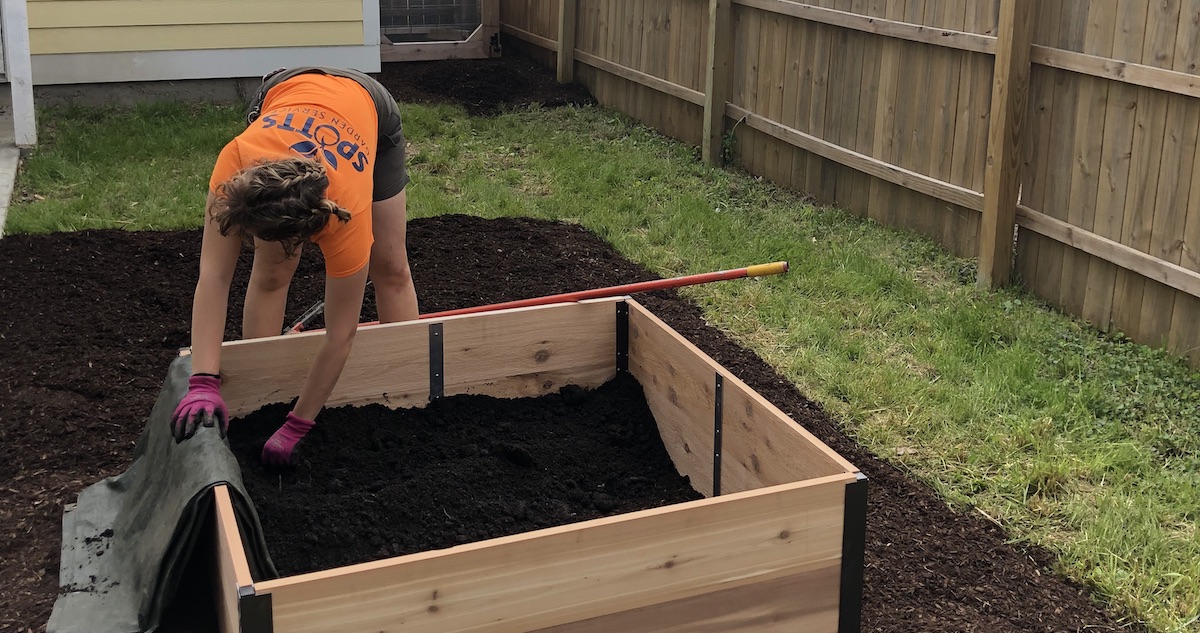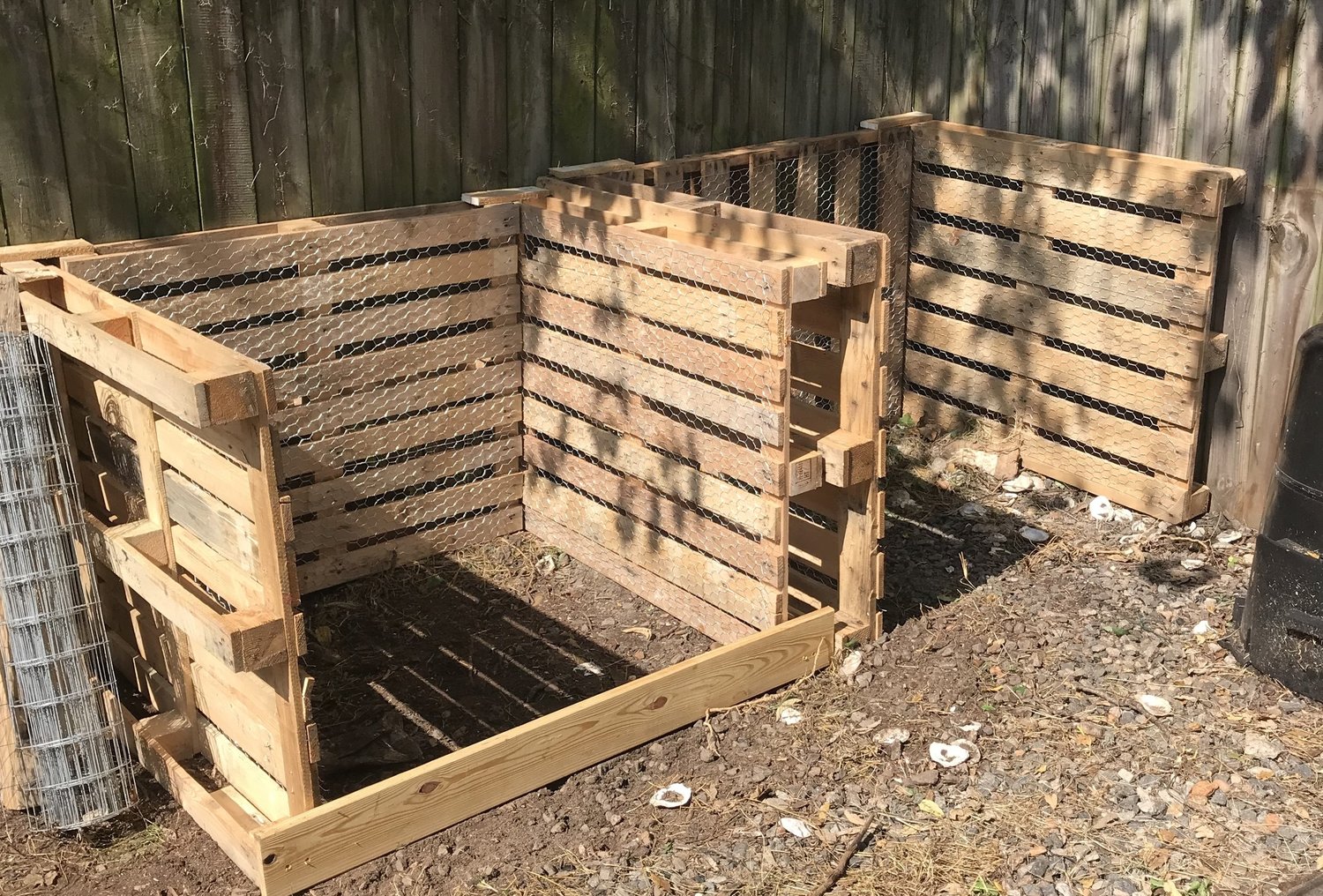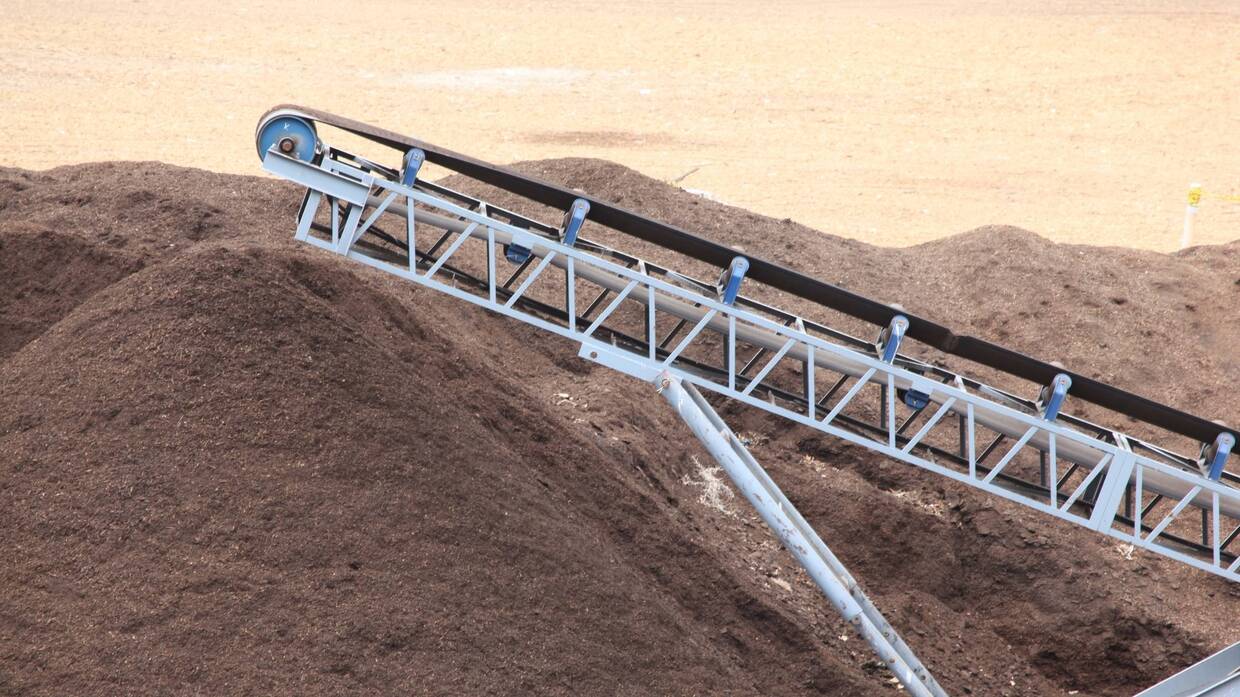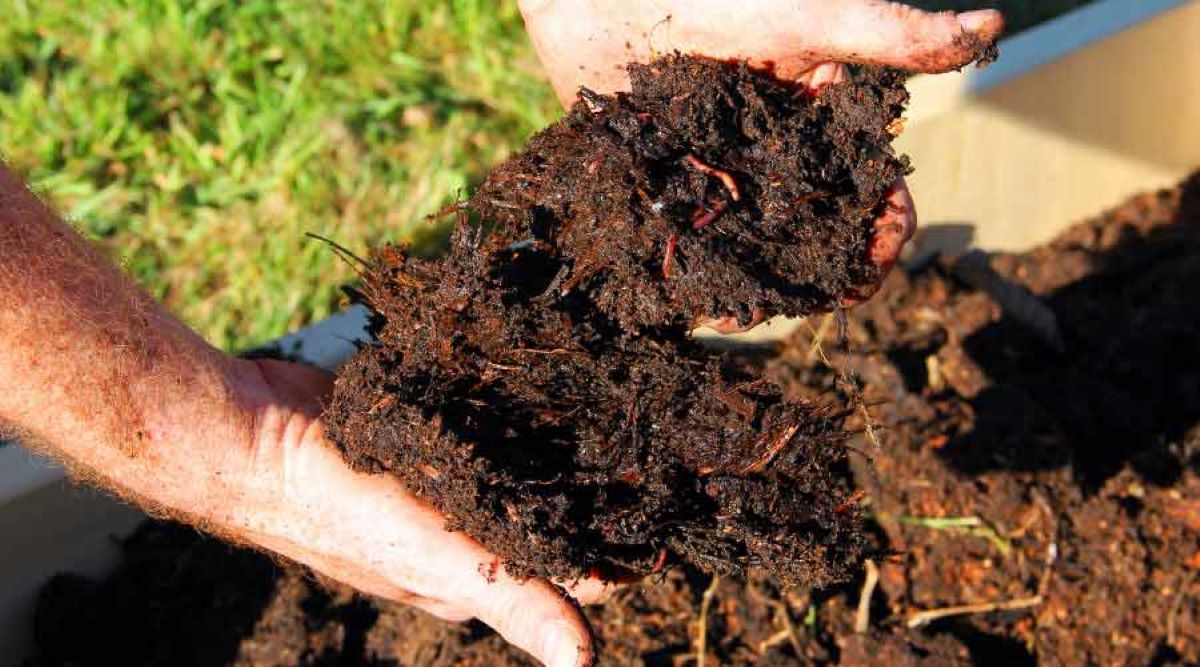Home>Gardening Basics>Understanding Soil>How Much Is A Pallet Of Topsoil
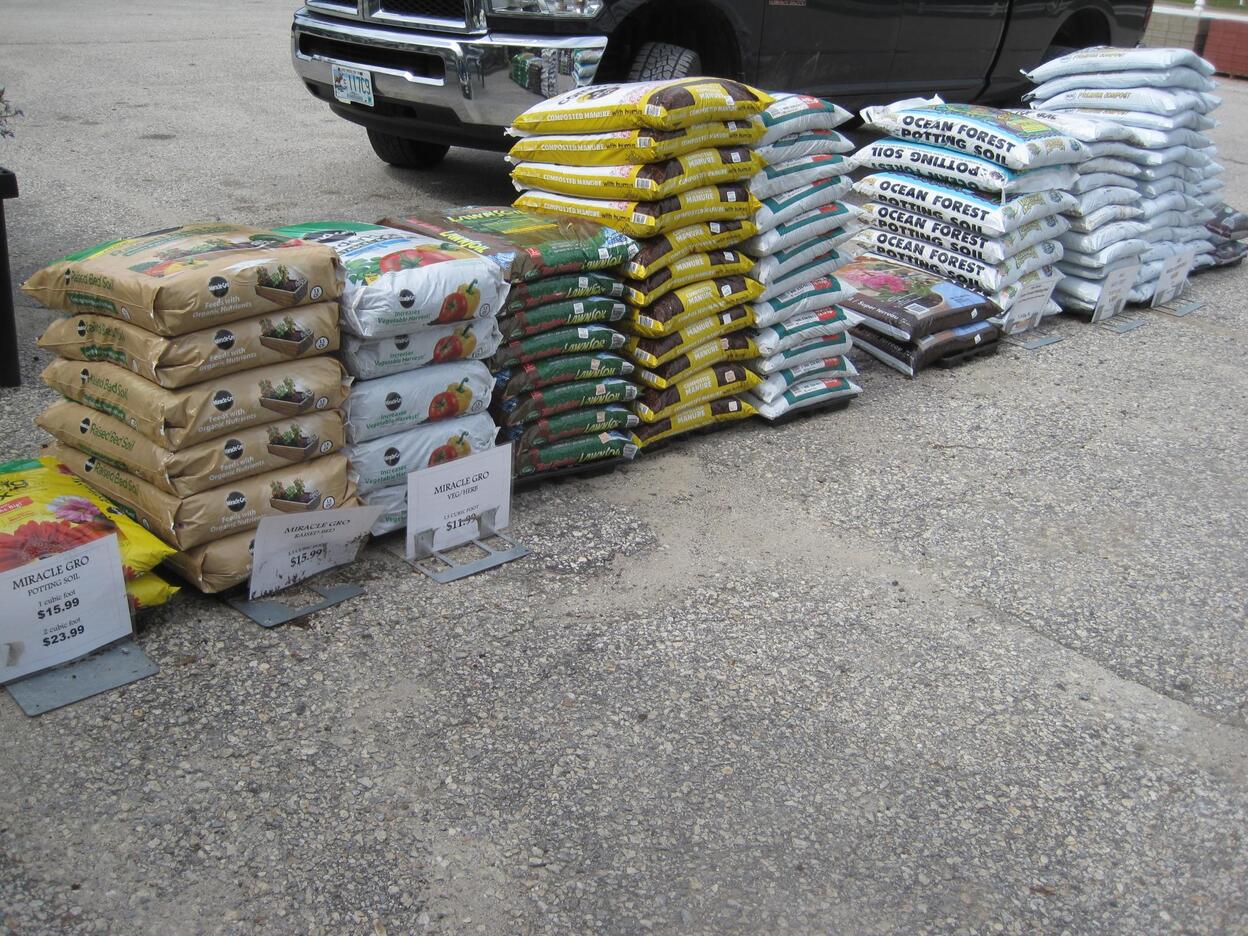

Understanding Soil
How Much Is A Pallet Of Topsoil
Modified: January 22, 2024
Learn everything you need to know about understanding soil, including how much a pallet of topsoil costs and its benefits for your garden or landscape.
(Many of the links in this article redirect to a specific reviewed product. Your purchase of these products through affiliate links helps to generate commission for Chicagolandgardening.com, at no extra cost. Learn more)
Table of Contents
Introduction
Welcome to the world of soil! Soil is a fascinating and vital component of our ecosystem, supporting plant life and providing the foundation for agriculture. Understanding soil is crucial for gardeners, landscapers, and anyone interested in cultivating healthy plants or creating beautiful outdoor spaces.
When it comes to soil, topsoil is often the star of the show. It is the uppermost layer of soil that contains organic matter, minerals, and nutrients necessary for plant growth. In this article, we will delve into the ins and outs of topsoil, exploring its definition, factors affecting its cost, and tips for purchasing it.
Whether you’re planning a garden makeover or need to replenish the soil in your existing beds, knowing how much topsoil you need is only half the battle. Understanding the cost involved will help you budget effectively and ensure you get the best value for your money.
Before we dive into the details, it’s important to note that topsoil can vary in quality and composition. Different regions and suppliers may offer topsoil with varying levels of organic matter, nutrient content, and texture. Therefore, it’s crucial to do your research and choose a reputable supplier to ensure you’re getting the best possible product for your specific needs.
Now, let’s take a closer look at what factors can influence the cost of topsoil and what you can expect to pay for a pallet of topsoil.
Definition of Topsoil
Topsoil is the uppermost layer of soil, typically ranging from 2 to 8 inches in depth, that contains a high concentration of organic matter, minerals, and nutrients. This layer is where most of the plant roots grow and obtain the necessary nutrients and water for their growth and development.
Topsoil is formed over time through the weathering of rocks and the decomposition of organic matter. It is rich in nutrients and is critical for supporting plant life. The organic matter in topsoil comes from plants, animals, and microorganisms, contributing to its dark color and spongy texture.
The composition of topsoil can vary depending on factors such as climate, geology, vegetation, and the processes that have influenced its formation. It can contain a mixture of sand, silt, clay, and various organic materials. The ideal composition of topsoil is often described as loam, which is a balanced combination of these components, providing good drainage, fertility, and aeration for plants.
Topsoil plays a crucial role in the overall health of plants and the success of gardening and landscaping endeavors. It provides the necessary nutrients for plant growth, anchors the roots in place, and retains water for sustained hydration. A healthy layer of topsoil can also help prevent erosion and regulate soil temperatures.
It is important to note that topsoil is different from subsoil, which lies beneath the topsoil layer and is typically less fertile and contains fewer organic materials. Subsoil primarily consists of broken down rocks and minerals.
Now that we have a clear understanding of what topsoil is, let’s explore the factors that can influence its cost.
Factors Affecting the Cost of Topsoil
The cost of topsoil can vary depending on several factors. Understanding these factors will help you determine why prices may differ between suppliers and regions. Here are some key factors that influence the cost of topsoil:
- Quality: The quality of topsoil can significantly impact its price. High-quality topsoil that is screened, free from contaminants, and rich in organic matter will generally be more expensive than lower-quality options. It’s important to consider the intended use of the topsoil and choose a quality that aligns with your specific needs.
- Quantity: The amount of topsoil you need can also affect the cost. Suppliers often offer topsoil in different quantities, such as cubic yards or pounds. The price per unit will typically decrease as the quantity ordered increases. Before purchasing topsoil, measure the area you plan to cover to ensure you buy the right amount and avoid unnecessary expenses.
- Location: The location of the supplier can impact the cost of topsoil. In some areas, topsoil may be readily available and more affordable due to proximity to sources of quality soil. However, if the supplier needs to transport topsoil from a distant location, the cost can increase due to transportation expenses. Keep in mind that prices may vary between regions based on availability and demand.
- Delivery: The cost of delivering topsoil to your location can add to the overall price. Factors such as the distance, accessibility of the delivery site, and the quantity of topsoil being transported can influence the delivery costs. Some suppliers may offer free or discounted delivery within a specific radius, while others may charge a separate fee. Consider these factors when estimating the total cost of purchasing topsoil.
- Extra Services: Additional services such as grading, leveling, or spreading the topsoil can incur additional costs. If you require these services, discuss them with the supplier beforehand to understand the associated fees. Keep in mind that these services can save you time and effort, ensuring that the topsoil is properly distributed for optimal results.
Remember, it’s important to consider all these factors and find a balance between cost and quality when purchasing topsoil. Now that we have explored the factors influencing the cost of topsoil, let’s delve into the average price range of a pallet of topsoil.
Average Price Range of a Pallet of Topsoil
The cost of a pallet of topsoil can vary depending on the factors mentioned earlier, such as quality, quantity, location, delivery, and any additional services. On average, the cost of a pallet of topsoil can range from $200 to $500.
It’s important to note that the size of a pallet can vary between suppliers, but a standard pallet typically contains around 40 to 50 bags of topsoil. Each bag typically holds 40 pounds or 0.75 cubic feet of soil, providing a total of around 30 cubic feet of topsoil per pallet.
The price per bag or per cubic foot of topsoil can range from $5 to $12, depending on the quality and other factors. Higher-quality topsoil will typically be on the pricier end of the spectrum, while lower-quality options may be more affordable.
Additionally, keep in mind that some suppliers may offer bulk discounts for larger quantities of topsoil. If you need a substantial amount of topsoil, it’s worth inquiring about any volume discounts that may be available.
Remember, the price range provided is an average, and actual prices may vary depending on your location and specific circumstances. Before making a purchase, it’s essential to compare prices from different suppliers, consider the quality and services offered, and determine what best fits your needs and budget.
Now that we have an idea of the price range for a pallet of topsoil, let’s explore any additional costs that you should consider when planning your topsoil purchase.
Additional Costs to Consider
When purchasing topsoil, it’s important to factor in any additional costs that may arise beyond the initial price of the pallet. Here are some additional costs to consider:
- Delivery Charges: If the supplier charges a separate fee for delivery, this cost needs to be taken into account. The delivery charge will depend on the distance from the supplier to your location, the weight of the topsoil, and any additional services required for unloading or spreading the soil.
- Equipment Rental: Depending on your project, you may need to rent or purchase equipment, such as a wheelbarrow or a shovel, to help distribute the topsoil around your garden or property. These equipment costs should be considered if you don’t already own the necessary tools.
- Site Preparation: If your project requires site preparation, such as removing existing vegetation or grading the area, these costs should be factored in as well. The extent of site preparation will depend on the condition of the area where the topsoil will be applied.
- Soil Testing: If you’re unsure about the quality or pH levels of your current soil, you may need to conduct soil testing to determine its nutrient content and composition. Soil testing kits or professional testing services can incur additional costs, but they can provide valuable information to ensure proper soil health and nutrient balance.
- Landscaping Services: If you’re not comfortable or equipped to spread the topsoil on your own, you may hire professional landscapers or gardeners to assist you. Landscaping services for topsoil installation can come with their own charges, so be sure to inquire about costs if you plan on hiring help.
By considering these additional costs, you can better estimate the total investment required for your topsoil project. It’s important to factor in these expenses to avoid any unexpected surprises and ensure you have sufficient funds for your landscaping or gardening endeavor.
Now that we’ve covered the additional costs to consider, let’s move on to some useful tips for buying topsoil.
Tips for Buying Topsoil
Buying topsoil can be a significant investment, so it’s important to make an informed decision. Here are some tips to consider when purchasing topsoil:
- Research Suppliers: Take the time to research and compare different topsoil suppliers in your area. Look for reputable suppliers with positive reviews and a history of providing high-quality topsoil. Consider asking for recommendations from local garden centers, landscapers, or friends who have experience with purchasing topsoil.
- Check the Quality: Before making a purchase, ask the supplier about the quality of their topsoil. Inquire about the screening process they use to remove debris and contaminants. It’s essential to choose topsoil that is free from rocks, weeds, and other unwanted materials to ensure the best growing conditions for your plants.
- Inspect the Soil: If possible, request to see a sample of the topsoil before making a purchase. Examine the texture, moisture content, and color. Healthy topsoil should be crumbly with a balanced moisture level and a dark, rich color. Avoid topsoil that appears overly dry, clumpy, or has an unusual odor.
- Consider Nutrient Content: Understanding the nutrient content of the topsoil is crucial. Inquire about the levels of essential nutrients such as nitrogen, phosphorus, and potassium. A reputable supplier should be able to provide this information or recommend a soil testing service. Ensure that the nutrient levels align with the needs of your plants.
- Ask About Origins: Inquire about the source of the topsoil. It’s important to understand if it is locally sourced or brought in from another region. Locally sourced topsoil may be more compatible with the existing soil in your area and have a better chance of containing beneficial microorganisms.
- Get Delivery Details: If you require delivery, ask about the delivery process, including any associated costs and estimated delivery timeframes. Ensure that the supplier can accommodate your preferred schedule and confirm if any special equipment or arrangements are needed for unloading the topsoil at your location.
- Consider Value, Not Just Price: While price is an important factor, prioritize value over the lowest price. Take into account the quality, nutrient content, and services offered by the supplier. Investing in high-quality topsoil with proper nutrient balance and delivery convenience can lead to better plant growth and long-term satisfaction.
By following these tips, you can make a more informed decision when buying topsoil and ensure that you are getting a product that meets your needs and expectations.
Now that we’ve covered the tips for buying topsoil, let’s summarize the key points discussed in this article.
Conclusion
Understanding topsoil is crucial for anyone involved in gardening, landscaping, or creating outdoor spaces. It serves as the foundation for healthy plant growth, providing essential nutrients, water retention, and a favorable environment for roots to thrive.
In this article, we explored the definition of topsoil and its importance in supporting plant life. We discussed the factors that can influence the cost of topsoil, such as quality, quantity, location, delivery, and additional services. The average price range of a pallet of topsoil was also outlined, providing a helpful reference for budgeting purposes.
Furthermore, we highlighted the additional costs to consider when purchasing topsoil, including delivery charges, equipment rental, site preparation, soil testing, and landscaping services. By accounting for these costs, you can better estimate the total investment required for your topsoil project.
Lastly, we provided valuable tips for buying topsoil, emphasizing the importance of researching suppliers, checking the quality of the soil, considering nutrient content, and asking about the origins and delivery details. These tips will empower you to make an informed decision when selecting topsoil for your specific needs and ensure that you get the best value for your money.
As you embark on your topsoil journey, remember that investing in high-quality topsoil and proper soil preparation can contribute to the long-term success of your gardening and landscaping projects. Take the time to choose the right topsoil supplier, assess the quality of the soil, and consider the services and costs associated with your purchase.
Now armed with knowledge about topsoil, factors affecting its cost, and tips for buying it, you are well-equipped to make confident decisions and create thriving landscapes and gardens. Happy gardening!

